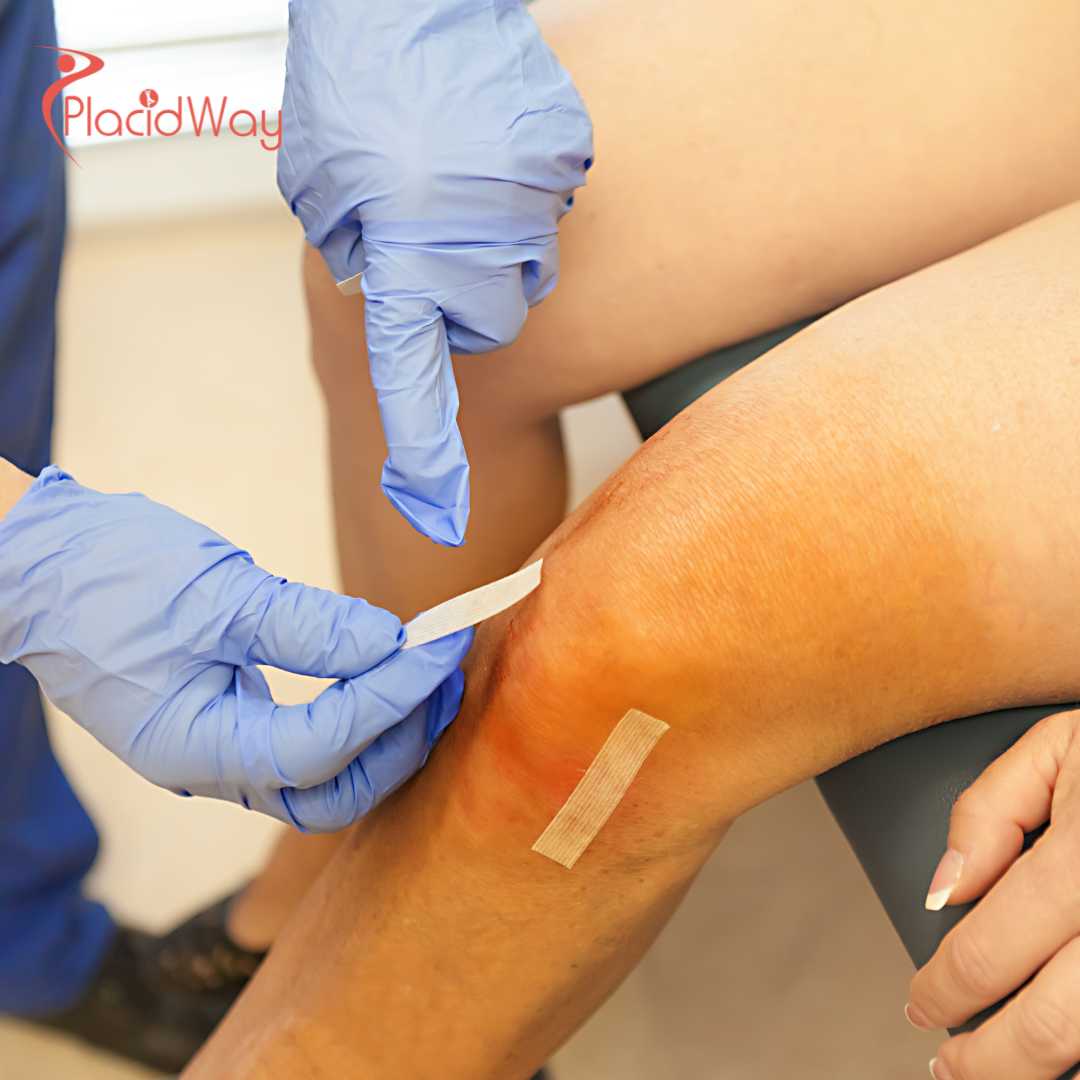
Hip Resurfacing Abroad - Your Guide to Pain-Free Movement
Hip pain can feel like a life sentence, limiting your favorite activities and dimming your outlook. For many, especially those who are younger and more active, the idea of a traditional total hip replacement can be daunting. It often means significant bone removal and potential limitations on high-impact activities. But what if there was another way? A path that preserves more of your natural anatomy and gets you back to the life you love, faster and with greater freedom?
Enter Hip Resurfacing, a revolutionary procedure that is changing the game for patients with debilitating hip arthritis. Unlike a total replacement, this surgery reshapes and caps the "ball" of your hip joint with a durable metal implant, preserving the femoral neck and bone stock. This approach can lead to a more natural-feeling hip, a lower risk of dislocation, and an easier path to revision surgery if ever needed in the distant future.
Now, combine this cutting-edge procedure with the incredible benefits of medical tourism. Imagine receiving world-class care from a highly experienced surgeon in a state-of-the-art facility, all for a fraction of what you would pay at home. This guide will walk you through everything you need to know about hip resurfacing surgery and why traveling abroad for your procedure might be the smartest decision you ever make for your health and your wallet.
What Symptoms Point to Needing Hip Resurfacing?
Recognizing the signs that your hip is failing is the first step toward relief. The most common indicator is persistent pain, which isn't always felt directly in the hip. Many patients experience a deep, aching pain primarily in the groin area. This pain can also radiate down the front of the thigh and even to the knee. It typically flares up during weight-bearing activities like walking, running, or even just standing for long periods, and might subside with rest.
Another tell-tale sign is stiffness. You might notice it's becoming increasingly difficult to perform simple movements. Putting on your shoes and socks, getting in and out of a car, or clipping your toenails can become major challenges. This loss of flexibility happens as the damaged cartilage in the joint wears away, causing the bones to rub against each other. You may also hear or feel a clicking, grinding, or catching sensation (crepitus) in your hip when you move, which is a direct result of this bone-on-bone friction.
Who is an Ideal Candidate for Hip Resurfacing?
Hip resurfacing is a fantastic option, but it's not suitable for everyone. The procedure has a specific "target audience" to ensure the best possible long-term outcomes. The prime candidates are generally younger (under 60), more active individuals who want to return to high-impact activities like running, tennis, or manual labor without the limitations of a traditional hip replacement.
Bone quality is perhaps the most critical factor. The surgeon relies on a healthy, strong femoral head and neck to support the implant. Therefore, patients with conditions like osteoporosis, avascular necrosis (bone death), or large bone cysts are not good candidates, as their bone structure might be too weak. This is also why the procedure is more commonly performed on men, who typically have larger and denser bones than women. A surgeon will always conduct thorough imaging tests, like X-rays and sometimes a DEXA scan, to assess your bone health before recommending the surgery.
Hip Resurfacing vs. Total Hip Replacement: What’s the Difference?
Think of it like fixing a damaged tooth. A total hip replacement is like extracting the entire tooth and replacing it with an implant. The surgeon removes the whole femoral head (the "ball") and neck of your thigh bone and inserts a long metal stem down into the bone shaft. A new ball is attached to this stem.
Hip resurfacing, on the other hand, is more like placing a crown on the tooth. The surgeon only shaves away the damaged cartilage and a small amount of bone from the surface of the femoral head, preserving the neck and the majority of the bone. A smooth metal cap is then cemented over the reshaped head. This key difference—bone preservation—is what sets resurfacing apart. It leaves you with a hip joint that is closer to your natural anatomy, which can lead to better stability, a more normal walking pattern, and a much lower risk of dislocation.
What are the Types of Hip Resurfacing Implants?
While the concept is straightforward, the technology behind the implants is highly advanced. The vast majority of hip resurfacing systems used today are known as metal-on-metal (MoM) implants. This means both the cap that covers the femoral head and the new socket (acetabular cup) placed in the pelvis are made from highly durable, medical-grade metal alloys, most commonly cobalt-chromium.
The choice of metal is intentional. These materials are incredibly resistant to wear and tear, which is essential for a joint that will endure millions of cycles of movement over its lifetime. Leading implant systems, such as the Birmingham Hip Resurfacing (BHR) system, have extensive track records with excellent long-term results in suitable patients. Surgeons select the implant size and brand based on the patient's anatomy, the surgeon's experience, and the implant's clinical history. It's crucial to have a surgeon who is highly experienced with a specific, proven implant system.
Why Should I Consider Traveling Abroad for Hip Resurfacing?
For many patients in countries like the US, UK, or Canada, two major barriers stand in the way of surgery: staggering costs and long waiting lists. Medical tourism elegantly solves both problems. International hospitals, particularly in destinations like Mexico, Turkey, and India, can offer the exact same procedure with the same high-quality implants for a fraction of the price. This isn't due to lower quality, but to a lower cost of living and operational expenses, allowing those savings to be passed on to you.
Furthermore, hip resurfacing is a technically demanding surgery that requires a specialist's touch. Because it's less common than total hip replacement, finding a surgeon at home with extensive experience can be difficult. Top medical tourism destinations often have orthopedic centers of excellence where surgeons perform hundreds of these procedures a year, honing their skills to a world-class level. You get access to a true expert without the months- or even years-long wait you might face in your home country's healthcare system.
How Much Does Hip Resurfacing Cost Around the World?
The cost difference is the most compelling factor for many medical tourists. The price tag for surgery in Western countries can be prohibitive, especially for those without comprehensive insurance. By looking abroad, you can save 50-70% on the total cost of your treatment package. This financial relief allows you to focus on what truly matters: your recovery and getting back to a pain-free life.
Here is a table to give you a clearer idea of the potential savings. Prices are approximate and can vary based on the hospital, surgeon, and specific needs of the patient.
| Country | Average Cost (USD) |
|---|---|
| United States | $30,000 - $55,000+ |
| United Kingdom | $20,000 - $35,000 |
| Mexico | $12,000 - $18,000 |
| Turkey | $9,000 - $16,000 |
| India | $8,000 - $14,000 |
| Thailand | $10,000 - $17,000 |
How Do I Choose a Safe Hospital and Surgeon Abroad?
Your safety is the number one priority. Vetting international options is crucial. Start by looking for hospitals with international accreditations, such as from the Joint Commission International (JCI). This certification ensures the hospital meets the same rigorous standards of care and patient safety as top hospitals in the United States.
Next, research the surgeon. Don't be afraid to ask for their credentials, their training, and specifically, how many hip resurfacing procedures they perform annually. A reputable surgeon will be transparent about their experience and outcomes. Reading testimonials and watching video interviews from past international patients can also provide invaluable insight into the quality of care. Using a trusted partner like PlacidWay can streamline this process, as they have already vetted a global network of top-tier hospitals and surgeons for you.
What's Included in a Medical Tourism Package?
Medical tourism packages are designed to make your journey as seamless and stress-free as possible. Instead of receiving dozens of separate bills, you are often given a single, all-inclusive price. This quote typically covers:
- The surgeon's and anesthesiologist's fees
- All hospital costs, including your private room and nursing care
- The cost of the high-quality hip implant
- All pre-surgical consultations and diagnostic tests (X-rays, blood work)
- Post-operative care and medications during your hospital stay
- In many cases, ground transportation (like airport and hotel transfers)
This transparent, bundled pricing model eliminates financial surprises and allows you to budget for your trip accurately. Always be sure to clarify exactly what is included in your specific package before you book.
What Does the Hip Resurfacing Recovery Timeline Look Like?
Recovery is a gradual process that requires patience and dedication to physical therapy. You’ll be up and walking with the help of crutches or a walker within 24 hours of surgery. The initial hospital stay is usually 3-5 days. During this time, you'll learn how to manage pain and begin gentle exercises.
After discharge, you'll continue with your recovery, typically staying in the destination country for another 1-2 weeks for follow-up appointments and physical therapy. By 4-6 weeks, most patients can walk without any assistance. Driving is usually permitted around the same time. While you will feel significantly better within a few months, the journey to full recovery and a return to unrestricted, high-impact activities takes time. Following your surgeon's protocol is key to achieving the best long-term result.
How Long Do Hip Resurfacing Implants Last?
One of the biggest advantages of hip resurfacing is the durability of the implants. The metal-on-metal bearing surface is incredibly wear-resistant. Long-term studies following patients with proven implant systems like the BHR show outstanding survival rates. The longevity is particularly high in the target demographic—active males with good bone quality.
This durability is crucial for younger patients, as it reduces the likelihood of needing multiple revision surgeries over their lifetime. And if a revision is eventually needed decades down the line, it is often a simpler procedure than revising a total hip replacement because so much of the natural bone has been preserved.
What Are the Potential Risks and Complications?
Like any major surgery, hip resurfacing has potential risks. These include general risks like infection, blood clots, and complications from anesthesia. Your medical team will take extensive precautions to minimize these dangers. The most significant risk specific to this procedure is a femoral neck fracture, which can occur in the early weeks post-surgery if the bone is weak or if the patient falls. However, the rate of this complication is very low (around 1%) when the surgery is performed by an experienced specialist on a properly selected patient.
Another consideration is the metal-on-metal bearing. As the implant moves, it releases microscopic metal particles (ions) into the bloodstream. In a very small percentage of patients, these ions can cause a local tissue reaction known as an adverse reaction to metal debris (ARMD). Surgeons will monitor your ion levels with simple blood tests during follow-up to ensure everything is functioning perfectly.
How Do I Plan for Aftercare When I Return Home?
A successful outcome depends on a smooth transition of care when you return home. Before your trip, it's wise to research and connect with a physical therapist in your local area. Your surgeon abroad will provide you with a comprehensive medical file, including operative notes, imaging, and a detailed physical therapy plan to share with them.
Reputable medical tourism companies and hospitals facilitate this process. They ensure you have all the necessary documentation for your doctor back home and often remain available for virtual follow-up consultations. This continuity of care ensures that your recovery stays on track long after you've returned from your medical journey, giving you peace of mind and a clear path back to an active, pain-free life.
Take the Next Step with PlacidWay
Ready to reclaim your active life without the burden of high costs and long waits? Your journey to a pain-free hip is just a click away. Explore top-rated international orthopedic centers, compare personalized packages, and get a free, no-obligation quote for your Hip Resurfacing surgery with PlacidWay. Let us help you plan a seamless and successful medical travel experience. Start your journey back to mobility today!
Orthopedic Surgery Abroad, Knee Sugery Abroad










Share this listing